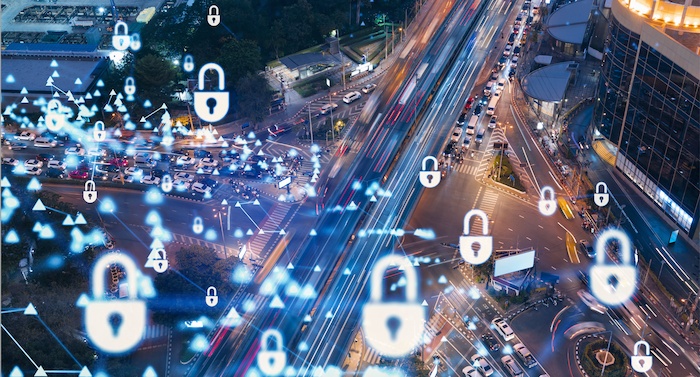Open the hood of today's vehicles, and especially, CASE vehicles, and you'll see, in tangible. real-life detail, evidence that the purely mechanical parts that we may have confidently confronted with an auto repair manual a generation ago have given way to a complex fusion of technology and engineering.
The days when a car's anatomy was predominantly mechanical have gone the way of floppy disks, dial-up internet, and CRT monitors. Now, when you open the hood of a CASE vehicle, you'll find a sophisticated network of connected devices, systems and software, integrated seamlessly with traditional automotive components.
This evolution reflects how vehicles have transformed into more than just machines for transportation; they are now smart, interconnected devices on wheels. This intricate blend of technology brings new capabilities, from advanced navigation systems to autonomous driving features, but it also introduces a new realm of challenges, particularly in cybersecurity and functional safety.
Roadblocks Faced by Makers of Connected Vehicles
The automotive industry is accelerating towards a more connected and autonomous future, but manufacturers now face an array of complex challenges. These roadblocks are not just about technology, but also encompass supply chain intricacies, market demands, and the heightened intersection of the automotive and tech sectors.
-
Complexity and Scale of Products: Today's connected vehicles are marvels of complexity, integrating advanced software with traditional automotive engineering. This complexity amplifies the challenge of maintaining quality and safety standards while innovating at breakneck speeds.
-
Soaring Demand for Connected Features: Consumers are increasingly seeking vehicles that offer more than just transportation. They want connectivity, entertainment, and convenience. Meeting these rising expectations without compromising on safety and cybersecurity is a delicate balancing act for manufacturers.
-
Cybersecurity: A Life-and-Limb Concern: In the realm of connected vehicles, a cybersecurity breach isn't just about data theft – it can be a direct threat to physical safety. Ensuring that vehicles are immune to such threats is paramount, as the implications of cybersecurity vulnerabilities extend far beyond the digital sphere.
-
Supply Chain Vulnerabilities: As software development rapidly evolves, the significance of managing software supply chain vulnerabilities has become increasingly paramount and complex. Software in CASE vehicles has become more interconnected and reliant on third-party components and open-source libraries. With this, the potential for vulnerabilities in the supply chain has grown.
It's no longer enough to focus solely on the security of the final product; it's equally critical to ensure the integrity and security of each component within the software supply chain.
-
Merging of Automotive and Tech Expectations: As the automotive and tech sectors continue to converge, customer expectations are skyrocketing. Today’s consumers expect their vehicles to be as up-to-date and user-friendly as their smartphones, setting a high bar for automakers to deliver continual enhancements and innovations.
A Look at High-Profile Cyberattacks on Vehicles: Lessons Learned
The road to automotive cybersecurity is paved with real-world incidents that highlight the importance of robust security measures. These high-profile cyberattacks on vehicles serve as wake-up calls, emphasizing the need for continuous vigilance and improvement in cybersecurity strategies.
-
The Jeep Cherokee Hack (2015): This infamous incident is like a scene from a techno-thriller. Researchers demonstrated their ability to remotely disable a Jeep Cherokee while it was in motion. This alarming exploit revealed the potential for hackers to gain control over critical functions of a vehicle, turning the spotlight on the urgent need for stronger cybersecurity measures in automobiles.
-
Tesla Model S Hack (2016): Tesla's Model S became the target of researchers who managed to interfere with the car's brakes, door locks, and other components from a distance of 12 miles. This incident not only showcased the vulnerability of connected vehicles to remote attacks but also highlighted the need for secure communication channels within automotive systems.
-
Tesla Model S Hack via Drone (2021): Taking vehicle hacking to new heights, researchers used a drone to wirelessly compromise a Tesla Model S’s infotainment system. This innovative approach to hacking demonstrated that even parked cars aren't safe from cyberattacks, underscoring the need for comprehensive security that covers all aspects of a vehicle.
-
Honda Rolling-PWN Attack (2021): The Rolling-PWN attack targeted Honda's rolling code system used for remote keyless entry. Researchers successfully exploited a vulnerability, allowing them to gain unauthorized entry into the vehicle. This attack brought to light the weaknesses in seemingly secure systems and the necessity of regular updates and patches to address emerging vulnerabilities.
These high-profile cyberattacks are not just cautionary tales but pivotal learning opportunities for the automotive industry. They underscore the critical need for advanced cybersecurity measures in connected vehicles. As automakers continue to innovate, learning from these incidents is vital for developing more secure and resilient automotive systems. Ensuring that vehicles are safeguarded against such vulnerabilities is crucial in maintaining consumer trust and safety in an increasingly connected world.
Driving Home the Importance of Cybersecurity
The journey to creating connected vehicles is filled with challenges that are as diverse as they are complex. From tackling the intricacies of product design and supply chain management to meeting the ever-evolving expectations of consumers and ensuring top-notch cybersecurity, automakers are navigating a landscape that is as challenging as it is exciting.
By acknowledging and addressing these challenges head-on, the industry can pave the way for a future where connected vehicles are not only innovative but also safe, secure, and reliable.
In the end, it all circles back to this: As our cars evolve, so must our approach to cybersecurity and safety. Standards like ISO/SAE 21434, ISO 26262, AUTOSAR, and others are our guides. By following these roadmaps and embracing collaboration, the automotive industry can steer clear of cyber threats, ensuring our vehicles are not just smart and connected, but also safe and secure.
Watch for Part 2 of this series - Automotive Cybersecurity Standards: A Primer, coming early next week!
Subscribe to Our Blog
Get the latest posts delivered straight to your inbox weekly.
Share this
You May Also Like
These Related Stories

What's Next for Automotive Cybersecurity?

When Dependabot Is Worse Than Nothing: Log4J As A Sub-Dependency


